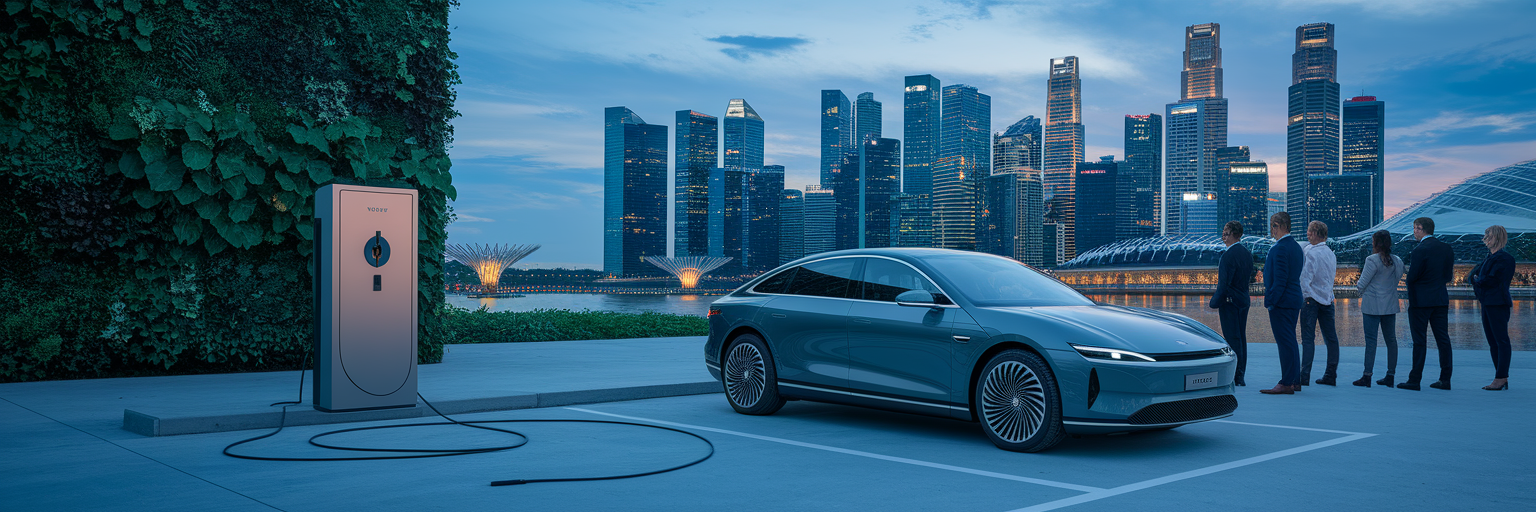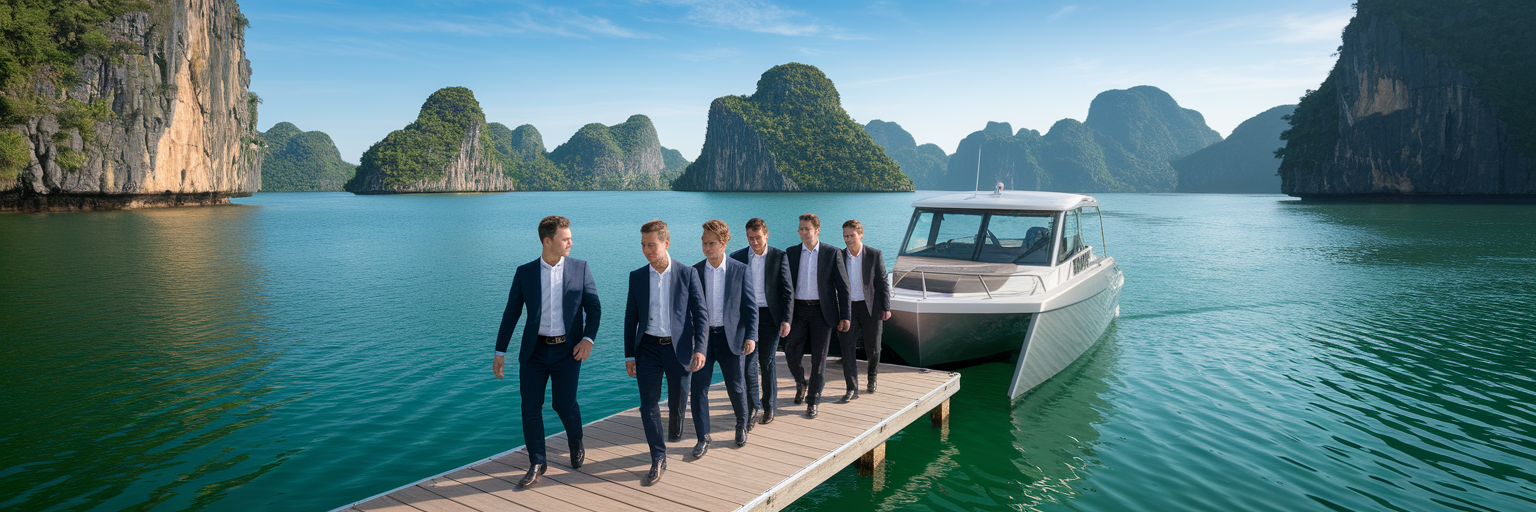Designing Electric Powered Incentive Trips in Southeast Asia
Learn to create memorable, low-carbon corporate travel experiences by integrating electric vehicles into your Southeast Asia incentive programs.

Learn to create memorable, low-carbon corporate travel experiences by integrating electric vehicles into your Southeast Asia incentive programs.

The conversation around corporate responsibility has moved from the boardroom to the travel itinerary. As ESG metrics increasingly shape investment decisions and brand perception, the way companies reward their top performers is under new scrutiny. This is not about ticking a box. It is a strategic pivot where sustainability becomes a powerful tool for differentiation and brand storytelling.
Adopting electric transport for incentive trips is a clear demonstration of this forward-thinking approach. The benefits extend far beyond reducing your carbon footprint. Imagine a guided tour through a historic city where the quiet hum of an electric vehicle allows participants to hear the guide clearly, or a coastal drive where the absence of engine noise makes the ocean breeze the main soundtrack. These moments create a more immersive, premium experience that traditional transport simply cannot match. This is the new face of corporate travel sustainability.
Choosing electric fleets also signals innovation and leadership. It allows you to design unique itineraries that are inaccessible to others, telling a compelling story about your company's commitment to the future. This approach to creating purposeful journeys is central to our mission of crafting impactful experiences. Ultimately, integrating electric mobility is not just an environmental choice. It is an investment in your brand’s reputation, employee engagement, and competitive edge.

With that strategic shift in mind, the question becomes: where can these ambitious programs be realized? Southeast Asia is quickly becoming a hub for electric innovation, offering diverse landscapes for unforgettable incentive trips. The rapid expansion of EV infrastructure across the region, as noted by organizations like the ASEAN Centre for Energy, is making these programs more feasible than ever.
As a hyper-modern city-state, Singapore presents the most mature market for electric mobility. Guided by its ambitious Green Plan 2030, the nation boasts an extensive and reliable charging network. This makes it ideal for large-scale conferences and tech-focused incentives where seamless logistics are paramount. Planners can arrange for entire fleets of luxury EVs for airport transfers and city tours, ensuring a smooth and sophisticated experience from start to finish.
Thailand offers a captivating mix of ancient culture and modern progress. In Bangkok, the iconic tuk-tuk has been reimagined in electric form, offering a quiet, zero-emission way to explore bustling markets and serene temples. In destinations like Phuket and Chiang Mai, a growing number of resorts and tour operators are adopting electric shuttles and vehicles. This allows for the creation of unique eco-friendly incentive programs Thailand has become known for, blending cultural immersion with a tangible commitment to preservation.
For programs focused on eco-luxury and natural beauty, Vietnam provides stunning backdrops. Imagine your group gliding through the limestone karsts of Ha Long Bay on silent electric boats, preserving the tranquility of this UNESCO World Heritage site. In the charming ancient town of Hoi An, electric buggies offer a respectful way to navigate narrow streets, minimizing noise and air pollution. These niche applications demonstrate how electric transport can provide exclusive access while protecting sensitive environments.
| Destination | EV Infrastructure Status | Unique EV Experiences | Best For |
|---|---|---|---|
| Singapore | Mature & Extensive | Seamless city-wide transfers, luxury EV fleets, public charging network | Large-scale conferences & tech-focused urban incentives |
| Thailand | Rapidly Growing | Electric tuk-tuk city tours, e-shuttles to resorts, coastal drives | Cultural immersion & blended urban/resort programs |
| Vietnam | Emerging & Niche | Silent electric boat cruises (Ha Long Bay), e-buggies at heritage sites | Eco-luxury retreats & exclusive, nature-focused excursions |
This table provides a snapshot for event planners to assess which destination best fits their program's scale, style, and sustainability goals. Infrastructure data is based on current public reports on EV adoption and government initiatives in each country.
Identifying the right destination is only the first step. The success of your program hinges on securing reliable local partners who can deliver on your vision. This requires a thorough vetting process that goes beyond a simple price comparison. You are not just booking vehicles. You are building a collaborative relationship.
When evaluating potential suppliers, consider these key factors:
Once you have a shortlist, the partnership agreement for electric transport for MICE must be detailed. It should clearly define service levels, contingency plans for charging, and vehicle availability guarantees. However, the best partnerships transcend logistics. A truly valuable local provider brings regional knowledge to the table, helping co-create authentic itineraries that might include visits to community-based tourism projects or other unique local experiences. Building these strong local ties is fundamental, reflecting a collaborative spirit we champion when we work with our partners.

Bringing these ideas together, what do these low-carbon incentive programs look like in practice? The possibilities are as diverse as the destinations themselves. By designing thoughtful itineraries, you can create powerful and memorable low-carbon corporate events.
Consider a model inspired by frameworks like the Singapore Tourism Board's sustainability guidelines. A high-tech corporate retreat in the city-state could feature seamless transfers in a fleet of electric buses, visits to urban farms, and workshops at green-certified venues. The entire journey becomes a showcase of smart, sustainable city living.
Alternatively, an eco-luxury wellness retreat in Bali or Phuket could use electric shuttles to transport guests from the airport to a green resort. The program might include guided e-bike tours through rice paddies and coastal villages, connecting participants with nature in a quiet, non-intrusive way. This demonstrates that sustainability enhances luxury rather than compromising it.
In Vietnam, a program centered on heritage preservation could use silent electric boats for an exclusive tour of Ha Long Bay at sunrise, followed by exploration of Hoi An's ancient town via electric buggies. This approach provides respectful access to culturally sensitive sites, making participants feel like privileged custodians rather than typical tourists. Executing these complex, multi-faceted programs requires deep expertise, as seen in the creative work we deliver for our clients.
To prove the value of these initiatives, measurement is key. Success can be quantified through:
A thoughtfully designed sustainable program deserves an equally thoughtful communication strategy. The story of your commitment to the planet and your people must be told effectively to maximize its impact. This narrative should be woven through every stage of the journey.
Before the trip, build anticipation with digital welcome packs that go beyond logistics. Highlight the use of electric vehicles and introduce the local partners you are supporting. Frame the trip not just as a reward, but as a pioneering experience that reflects the company’s values. This sets a purposeful tone from the outset.
On-site, make the sustainable elements tangible and engaging. In-vehicle displays could show real-time emissions saved, turning a simple transfer into an interactive moment. QR codes could link to information about the local ecosystems being protected by your choice of transport. These small touches reinforce the message and make participants active stakeholders in the program's success.
After the trip, amplify the story. Create a compelling impact report featuring hard data, like the total CO2 tons saved, alongside powerful testimonials from participants. This content is invaluable for internal communications, ESG reports, and corporate social media, building momentum for future initiatives. This holistic approach to event design and communication is a key part of the comprehensive strategic event services that ensure every program delivers lasting value for your brand and your team.